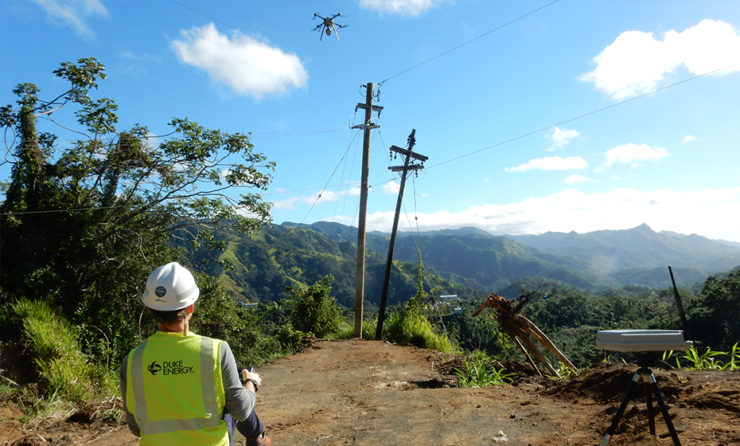Drones Help Bring Back Electricity in Puerto Rico

© Duke Energy
After hurricane Maria hit Puerto Rico last fall, hundreds of thousands of Americans have suffered through power outages. The hurricane was fierce and battered the island with 155 mph wind blasts. The good news is that commercial drones have come to the rescue. As the country struggles to come back online, drones are now being used to lift power lines and put them back into place supporting the rescue crew and helping them work faster.
Over 200 workers have been sent by North Carolina based Duke Energy since January this year. The company has deployed 5 drones to search for downed utility poles and power lines that are buried under rubble. The drones are also assisting with stringing new lines through the inaccessible terrain. These emergency activities are normally dangerous and tedious for human beings. Typically, Duke Energy workers would go through the island searching for power lines and attaching the ones discovered to light strings and brass projectiles. The lines would be fed through the gaps between utility poles with a gun. These activities are very exhausting and sometimes workers find themselves working long shifts.
But now, by using drones they can find power lines faster while minimizing the risks of bodily harm. The drones can effectively maneuver between poles and undertake stringing tasks more efficiently. And that’s not all. By using drones, workers will save a lot of time and money, and emergency operations can run smoother than they did before. Duke Energy stated that they were really excited about the drones’ ability to reduce risks to its employees as this was one of their motivators in using drone technology. No longer is height going to be a problem or working around exposed power lines. Even working in hard to maneuver or confined spaces will be an easy task stated Jacob Velky, manager of Unmanned Aircraft Systems (UAS) at the company.
The cheapest Duke Energy quadcopter is priced at $15,000 and can carry as much as 26 pounds and fly for up to 40 minutes. Two of the companies drones are currently outfitted with cameras for scouting and assessment of damaged power infrastructure. To increase speed and efficiency, drones that carry out stringing work are not equipped with cameras or sensors. The linemen that work with these drones depend on radio communication to confirm that the drones are correctly situated before releasing the lines.
This is obviously not an efficient way of doing things, but at the moment this is what the workers have to deal with and they’re making the best of it. Even if the process was more efficient, workers will still need to rely on their human senses to handle any unexpected challenges. Another problem the crew faces is the weather condition. It is hard to calculate the effects of wind and rain during disaster events, and this is especially difficult in a tropical mountain area like Puerto Rico.
The company’s experience in Puerto Rico is unique. Duke Energy expects that the demand for its drones will increase. Currently, workers will continue to string power distribution lines for the next few months. So the drones have enough time to prove that they’re not just eyes and ears, but also muscles too.
|